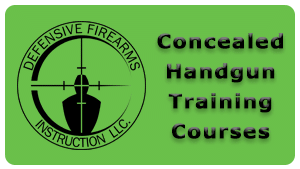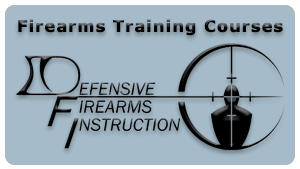Properly Carry With A Round in the Chamber
There are a ton of myths and personal opinions that circulate with regards to carrying a firearm with a round in the chamber.
I hear the arguments about how “unsafe” it is to carry with a round in the chamber all the time; while in most cases, as long as you are smart about how you carry, it is perfectly safe.
The first thing to consider is what type of firearm you are going to be carrying.
If you are going to carry a single action pistol like a 1911, there is nothing wrong with carrying with a round in the chamber; however, this type of handgun is generally not drop safe.
The proper way to carry a 1911 with a round in the chamber would be with the hammer to the rear and the safety on.
The other way to carry a 1911 would be to have a full magazine inserted, chamber empty, hammer forward, and safety on.
Either way is perfectly safe; however, with a round in the chamber, the carrier would be able to engage a threat significantly faster than with an empty chamber.
If you are going to carry a striker fire platform like a Glock or a Smith and Wesson M&P, it is perfectly fine to carry with a round in the chamber as these are drop safe.
A common misconception with these firearms is that they have no safeties.
This is actually not true, they typically have multiple safeties like a trigger safety, firing pin safety, and drop safeties.
All of the safeties are engaged until the trigger is pressed to the rear.
These firearms are very safe to carry with a round in the chamber as long as the firearm is being carried in a quality holster and the trigger assembly is covered.
If you are carrying a double action/single action semi-automatic handgun for personal protection, the proper way to carry these firearms is with a loaded magazine inserted, round in the chamber, and hammer forward.
Double action/single action semi-automatic pistols will typically have an external safety and usually a de-cocking mechanism.
It is never advisable to carry this type of firearm with the hammer back as this would be the single action mode which requires a lot less pressure on the trigger to send the hammer forward.
The key to safety when carrying with a round in the chamber is to know what type of firearm you are carrying and to use quality gear.
I also advise staying away from “fads” with gear.
There are systems coming out like “gun clips” that are nothing more than a pocket clip attached to the slide or frame of the firearm, and bungee systems with a clip attached for a “minimalist feel” when carrying.
The issue that I have with these systems is that they do not cover the fire control group (I.e. the trigger).
If a piece of clothing or another object works its way into the trigger guard and puts pressure on the trigger, this significantly increases the chance for a negligent discharge and potentially injuring yourself or another.
4 Comments on “Properly Carry With A Round in the Chamber”
Leave a Reply
You must be logged in to post a comment.




I carry my Springfield Garrison in condition1. It’s safe and allows me fast response and low noise due to dropping the thumb safely to engage should it ever become necessary. It will NOT a accidentally fire unless the 3 safeties are disengaged. I have heard (obviously) that no pistol is drop proof so just don’t fiddle with it like a newbie. Leave it in a secure holster till either you need it or are putting it on the nightstand till morning. NEVER pull a “hot” gun unless you need it or going to bed for the night. Cleaning is different as you already know.
What about a sig
There is no reason to carry with the round in the chamber all the time as there still some risk I rather wait until the situation or environment assessment suggests round in the the chamber IMHO
When on duty with the MSP, I carried a Glock with a fully loaded magazine and a round in the chamber. If I needed to deploy my weapon, all I had to do was draw, aim, and squeeze the trigger. At the end of the day/duty, I removed the magazine, ejected the round from the chamber, visibly and physically checked the magazine well and chamber for round clearance then squeezed the trigger to release the tension on the sticker. Stored the weapon in a locked, stationary gun box. Done.